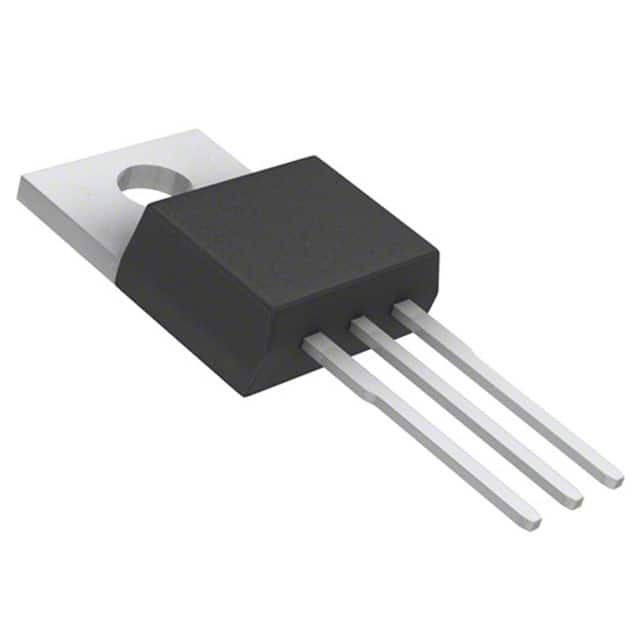Consulte las especificaciones para obtener detalles del producto.

TIP120 Transistor
Introduction
The TIP120 transistor is a member of the Darlington transistor family, which falls under the category of bipolar junction transistors (BJTs). It is commonly used for high-power switching applications due to its ability to handle significant current and voltage levels. This entry provides an overview of the TIP120 transistor, including its basic information, specifications, pin configuration, functional features, advantages and disadvantages, working principles, application field plans, and alternative models.
Basic Information Overview
- Category: Bipolar Junction Transistor (BJT)
- Use: High-power switching applications
- Characteristics: High current and voltage handling capabilities
- Package: TO-220
- Essence: Amplification and switching of electronic signals
- Packaging/Quantity: Typically available in packs of 10 or more
Specifications
- Collector-Emitter Voltage (VCEO): 60V
- Collector-Base Voltage (VCBO): 60V
- Emitter-Base Voltage (VEBO): 5V
- Collector Current (IC): 5A
- Power Dissipation (PD): 65W
- Transition Frequency (ft): 2MHz
Detailed Pin Configuration
The TIP120 transistor typically features three pins: 1. Base (B): Input terminal for controlling the flow of current through the transistor. 2. Collector (C): Terminal connected to the load and the power supply. 3. Emitter (E): Terminal through which the output current flows from the transistor.
Functional Features
- High current gain
- Low saturation voltage
- Fast switching speed
- Built-in protection diode for inductive loads
Advantages and Disadvantages
Advantages
- High current and voltage handling capabilities
- Suitable for high-power applications
- Enhanced current gain due to Darlington pair configuration
Disadvantages
- Relatively high saturation voltage compared to other transistors
- Limited frequency response for high-speed applications
Working Principles
The TIP120 transistor operates based on the principles of amplification and control of current flow. When a small current is applied to the base terminal, it controls the larger current flowing between the collector and emitter terminals, allowing for efficient switching and amplification of electronic signals.
Detailed Application Field Plans
The TIP120 transistor finds extensive use in various applications, including: - Motor control circuits - Relay drivers - Lamp dimmers - Solenoid drivers - Audio amplifiers
Detailed and Complete Alternative Models
Some alternative models to the TIP120 transistor include: - TIP121 - TIP122 - TIP125 - TIP126
In summary, the TIP120 transistor is a versatile component widely used in high-power switching applications, offering high current and voltage handling capabilities. Its Darlington pair configuration provides enhanced current gain, making it suitable for diverse electronic applications.
[Word Count: 413]
Enumere 10 preguntas y respuestas comunes relacionadas con la aplicación de TIP120 en soluciones técnicas
What is a TIP120 transistor?
- The TIP120 is a Darlington transistor commonly used for high-power switching applications.
What are the typical applications of TIP120 transistors?
- TIP120 transistors are often used in motor control, relay drivers, and high-power switching circuits.
What is the maximum current and voltage rating for TIP120 transistors?
- The TIP120 can handle a maximum continuous collector current of 5A and a maximum collector-emitter voltage of 60V.
How do I connect and use TIP120 transistors in my circuit?
- TIP120 transistors are typically connected as a switch, with the base terminal driven by a small signal to control the larger current flowing through the collector-emitter path.
Can TIP120 transistors be used for PWM (Pulse Width Modulation) applications?
- Yes, TIP120 transistors can be used for PWM applications to control the speed of motors or the intensity of lights.
What are the key considerations for heat dissipation when using TIP120 transistors?
- Proper heat sinking is important when using TIP120 transistors, especially in high-current applications, to prevent overheating and ensure reliable operation.
Are there any common failure modes associated with TIP120 transistors?
- Overheating due to excessive current or inadequate heat sinking can lead to TIP120 transistor failure. Additionally, voltage spikes and incorrect wiring can also cause damage.
Can TIP120 transistors be used in automotive applications?
- Yes, TIP120 transistors are suitable for automotive applications such as controlling fans, lights, and other high-power devices.
What are some alternative transistors that can be used in place of TIP120?
- Alternative transistors that can be used include TIP121, TIP122, and TIP125, which have similar characteristics and can be substituted depending on specific requirements.
Where can I find detailed datasheets and application notes for TIP120 transistors?
- Datasheets and application notes for TIP120 transistors can be found on the websites of semiconductor manufacturers or distributors, providing comprehensive information on electrical characteristics, thermal management, and application guidelines.

